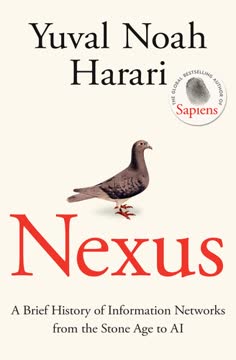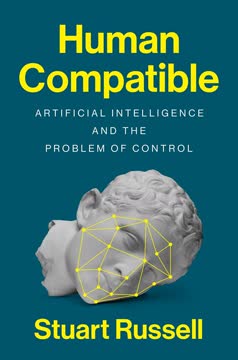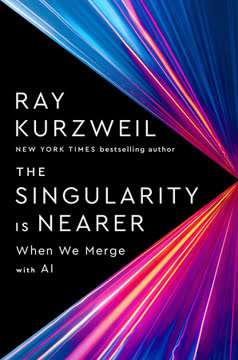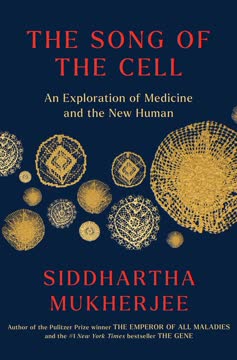ключови извода
Заключение: Пътят напред за човешкия интелект и бъдещето на знанието
Човешкият интелект е изключително постижение, което ни е позволило да разберем света, да създаваме технологии и да оформяме цивилизации. Теорията за Хилядата мозъка ни показва, че интелигентността не е централизирана, а се ражда от множество паралелни модели, които работят заедно, за да създадат стабилна и гъвкава представа за реалността. Това разбиране не само променя начина, по който гледаме на мозъка, но и отваря нови възможности за развитието на изкуствения интелект, който може да се учи и адаптира по начин, подобен на човешкия.
В сърцето на тази сложна система стои неокортексът – източникът на нашето мислене, език и разум. Въпреки това, той е свързан с по-древни мозъчни структури, които често предизвикват вътрешни конфликти между рационалното и инстинктивното. Тези противоречия могат да доведат до формиране на погрешни убеждения, които застрашават както отделния човек, така и обществото като цяло.
В епохата на бързо развиващите се технологии, изкуственият интелект все още не достига нивото на човешката гъвкавост и разбиране, но пътят към истински интелигентни машини минава през прилагането на принципите, които природата е усъвършенствала в нашия мозък. В същото време, ние трябва да бъдем внимателни и отговорни, защото интелектът, който ни е донесъл успех, крие и рискове за нашето оцеляване – от климатични промени до неконтролируемо развитие на технологии.
Затова е жизненоважно да използваме нашия интелект не само за краткосрочни цели, но и за дългосрочното съхранение и разширяване на знанието. Това е нашият истински наследствен дар за бъдещите поколения – да запазим и предадем натрупаното знание, да създадем устойчиви архиви и да планираме бъдещето на човечеството отвъд биологичните ограничения.
В крайна сметка, нашата цел трябва да бъде не просто оцеляване, а създаване на свят, в който интелектът служи като инструмент за мъдрост, сътрудничество и устойчиво развитие. Само така можем да гарантираме, че постиженията ни ще продължат да вдъхновяват и обогатяват живота на всички, които идват след нас.
Последна актуализация:
FAQ
What's A Thousand Brains: A New Theory of Intelligence about?
- Exploration of Intelligence: The book presents a groundbreaking theory on how intelligence is formed in the brain, focusing on the neocortex.
- Thousand Brains Theory: Jeff Hawkins introduces the idea that each cortical column in the neocortex independently learns models of the world.
- Human and Machine Intelligence: It explores the implications of this theory for understanding human cognition and developing AI that mimics these processes.
Why should I read A Thousand Brains: A New Theory of Intelligence by Jeff Hawkins?
- Innovative Perspective: Hawkins challenges traditional neuroscience views, offering a fresh take on how intelligence arises.
- Practical Applications: Insights from the book could influence future AI developments, making it relevant for tech enthusiasts and scientists.
- Engaging Writing: The book is accessible, making complex scientific ideas understandable for a general audience.
What are the key takeaways of A Thousand Brains: A New Theory of Intelligence?
- Neocortex Functionality: Intelligence is distributed across cortical columns in the neocortex, each learning independently.
- Reference Frames: These are crucial for organizing knowledge and predicting sensory inputs.
- Distributed Intelligence: Intelligence is not centralized but spread across many cortical columns, contributing to our understanding of the world.
What is the Thousand Brains Theory of Intelligence?
- Cortical Columns: Each column acts as a separate learning unit, creating its own model of the world.
- Predictive Modeling: Columns make predictions based on sensory inputs, allowing for a dynamic understanding of the environment.
- Collective Consensus: The brain reaches a unified perception through a voting mechanism among these columns.
How does the brain learn according to A Thousand Brains?
- Sensory-Motor Learning: Learning occurs through movement and interaction, observing changes in sensory inputs over time.
- Model Creation: Cortical columns create models based on sensory experiences, organized by reference frames.
- Continuous Updating: The brain constantly updates its models with new information, maintaining relevance and accuracy.
What role do reference frames play in the brain according to Jeff Hawkins?
- Organizing Knowledge: Reference frames help organize knowledge about objects and concepts for efficient retrieval.
- Predictive Function: They enable predictions about sensory inputs based on past experiences.
- Flexibility in Learning: Reference frames adapt to different contexts, aiding in learning abstract concepts and physical objects.
What are the implications of the Thousand Brains Theory for artificial intelligence?
- New Paradigm for AI: AI should mimic the brain's structure and function, not just rely on deep learning.
- Flexibility and Learning: Future AI should learn flexibly and adaptively, like humans.
- Potential for AGI: Understanding this theory could lead to creating AGI with human-like cognitive abilities.
How does Jeff Hawkins differentiate between the old brain and the new brain?
- Old Brain Functions: Responsible for basic survival and instinctual behaviors.
- New Brain Capabilities: The neocortex handles higher-level thinking, language, and reasoning.
- Conflict Between Brains: The old and new brain can conflict, affecting decision-making and behavior.
How does A Thousand Brains address the binding problem in neuroscience?
- Consensus Through Voting: The brain integrates sensory inputs into a single perception via a voting mechanism among cortical columns.
- Distributed Knowledge: Multiple models inform perception, allowing for a cohesive understanding of stimuli.
- Stability of Perception: Perceptions remain stable as sensory inputs change, thanks to voting neurons.
What are the four attributes of intelligence proposed in A Thousand Brains?
- Learning Continuously: Intelligence involves continuous adaptation to new information.
- Learning via Movement: Movement facilitates interaction and knowledge acquisition.
- Many Models: Intelligence maintains multiple world models for flexibility.
- Using Reference Frames: Knowledge is stored in reference frames for predictions and planning.
What existential risks does Jeff Hawkins discuss in A Thousand Brains?
- Human Behavior: Primitive instincts can lead to aggressive behaviors threatening survival.
- False Beliefs: These can result in poor decisions, worsening risks like climate change.
- Machine Intelligence: While not a direct threat, responsible development is crucial to avoid misuse.
What are some proposed methods for preserving human knowledge according to Jeff Hawkins?
- Wiki Earth Concept: Creating a space-based repository of human knowledge.
- Long-Lasting Signals: Sending strong signals into space to share knowledge with extraterrestrial intelligences.
- Intelligent Machines: Developing machines to travel and share knowledge across the galaxy.
Рецензии
„Хиляда мозъка“ предизвика смесени отзиви. Мнозина читатели оцениха първата част, в която Хокинс обяснява своята теория за интелигентността, като проницателна и провокираща размисъл. Въпреки това, мненията за по-късните раздели, посветени на изкуствения интелект, съзнанието и бъдещите последици, бяха разнопосочни. Някои похвалиха ясния стил на писане и иновативните идеи на Хокинс, докато други сметнаха, че той опростява прекалено сложни теми или се отклонява твърде далеч от основната тема. Критиците отбелязаха липсата на експериментални доказателства в подкрепа на теорията и поставиха под въпрос някои от смелите твърдения на автора. В крайна сметка книгата предизвика интерес към невронауката и изкуствения интелект, но остави част от читателите с усещането за липса на по-съществено научно съдържание.
Similar Books














